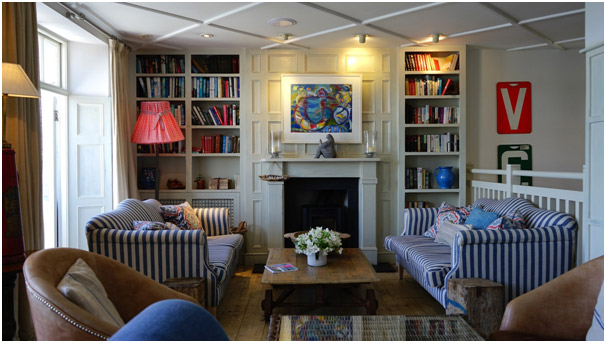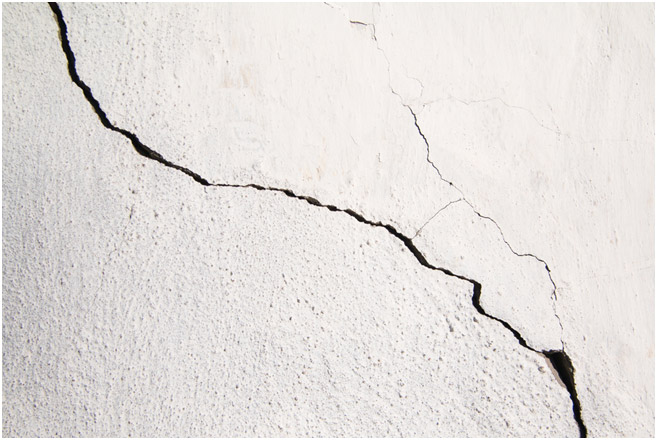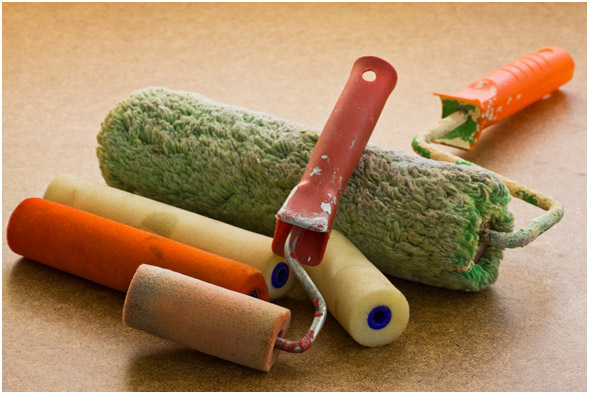
Mike Birdy/Pexels.com
So you’ve moved all your furniture back into place after a long weekend of painting. The house looks clean and new and you smile at the awesome job well done. But then you take a closer look and you find a crack in the paint, and then another, and even more!
Having cracks appear on your wall may just be a cosmetic problem, or it could indicate a more serious, structural issue. The first step to fixing the problem is identifying which one it is:
Structural damage vs hairline cracks

A_l.i.s_A/Shutterstock.com
A good indicator of structural damage is looking at how long and large the wall crack is. If it is substantial (more than 1.5 inches wide), and the crack persists even after numerous repair jobs, or you have difficulty closing your windows and doors, it might signal a structural problem. At this stage, it is best to rope in a professional to assess the situation and handle the job for you.
Non-structural cracks—hairline cracks—however, are more common in most homes and are sometimes unavoidable. They tend to surface near windows and doors and can appear due to a variety of reasons.
Identifying the cause and learning how to repair the crack properly can help you avoid similar situations in future.
Why do cracks occur on walls?
Here are a few common reasons:
- Contraction and expansion: The materials (paint, plaster) that make up your wall contract and expand because of fluctuations in humidity levels and temperature changes. This is usually a problem if the wall is within a room that is periodically air-conditioned or it faces the afternoon sun quite a bit. The movement of contraction and expansion can cause hairline cracks to appear.
- Low quality paint: Inferior quality paint results in poor paint adhesion on your wall, which leads to cracks over time. In addition, using different paints for each paint coat can also cause cracks on the wall.
There’s no way around it! Keep your paint consistent and use a high-quality product. It might hurt a little now, but it’s better than suffering for it down the road. - Impatience during plasterwork: Sometimes, patience is the best way to go. Not letting cement plaster completely dry before applying paint is actually quite a common factor attributed to cracks. So put on some Netflix and chill out! It’ll be better than buying new paint to redo your walls.
- Poor paint job: Painting an entire house can be a huge amount of work, and it can be tempting to rush through it. But mistakes like missing out layers, or not letting previous layers completely dry can hamper your overall efforts. A good paint job takes time, so plan around it!
Get cracking: how do we resolve hairline cracks?

Auhustsinovich/Shutterstock.com
If you find a hairline crack, don’t panic! While you can engage a contractor to do the job, most hairline cracks can be resolved with a DIY job.
It might seem counter-productive, but you should first create a deeper hairline crack (using a scraper, screwdriver or utility knife) before starting the repair work. This “opens up” the crack so that you can clean out the loose concrete, paint, debris or old filler (using a cloth, dry brush or vacuum) before mending. This also helps the filling solution to properly fill the insides of the crack.
After cleaning the crack, fill it with filling solution/joint compound. Make sure the filler covers the entire crack.
Even out the surface with your scraper and let the filling dry out for a day. Keep point 3 and 4 in mind. Don’t rush the process!
Once the surface has dried, sand it down so the surface is completely smooth and even.
Then apply paint. If you are applying two coats, always make sure the first coat has properly dried before applying the second coat. A good paint option is Nippon Paint 3-in-1 Medifresh, which is specially formulated to cover hairline cracks.
To find out more about how to use paint to achieve your desired looks, check out how to choose the right paints for your wall and how to use colours effectively.
